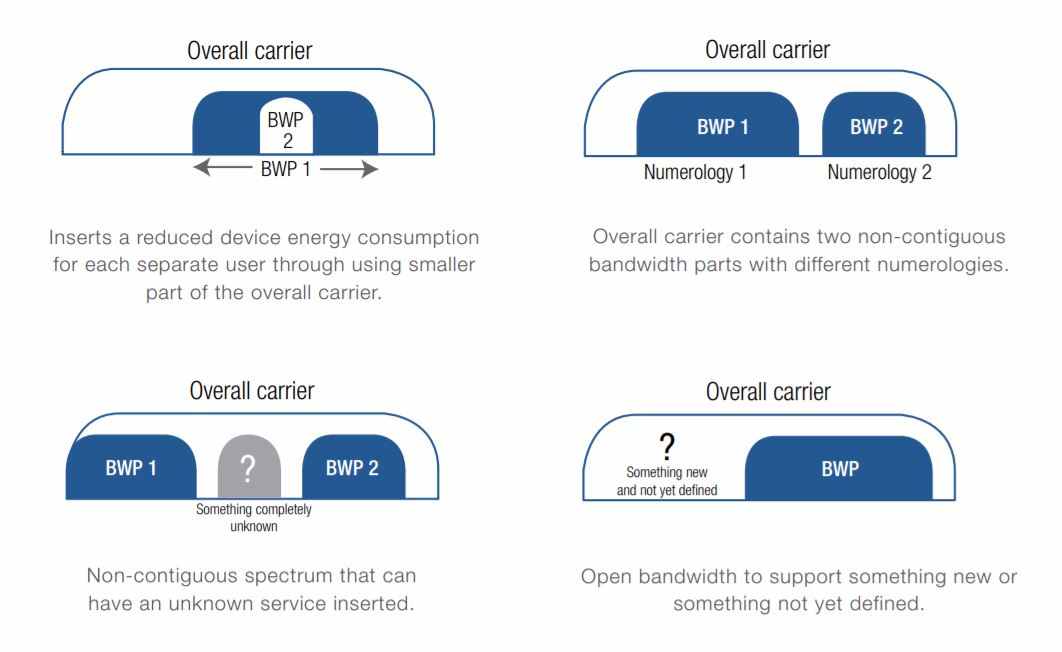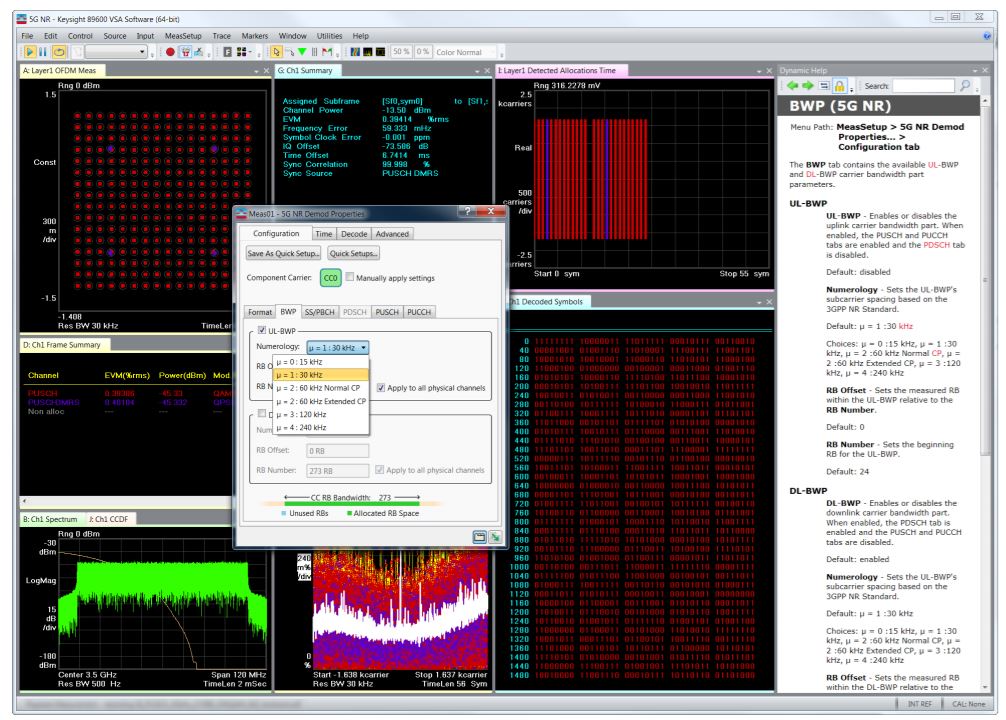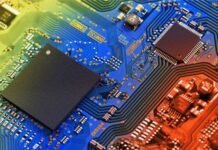A new concept in 5G New Radio (NR) is a feature known as bandwidth parts (BWPs). BWP enable more flexibility in how resources are assigned in a given carrier. Bandwidth parts are really about providing flexibility so that multiple, different signal types can be sent in a given bandwidth. Most base stations can utilize the wider bandwidths available in 5G. User equipment (UE) capabilities, however, will vary and it will be more challenging for some UEs to use the larger available bandwidths. Bandwidth parts enable multiplexing of different signals and signal types for better utilization and adaptation of spectrum and UE power.
LTE carriers are narrower in bandwidth, up to 20 MHz maximum that can be aggregated together to create a channel bandwidth up to 100 MHz in LTE-Advance, or up to 640 MHz in LTE-Advanced Pro. In comparison, 5G NR maximum carrier bandwidth is up to 100 MHz in frequency range 1 (FR1: 450 MHz to 6 GHz), or up to 400 MHz in frequency range 2 (FR2: 24.25 GHz to 52.6 GHz) that can be aggregated with a maximum bandwidth of 800 MHz.
With bandwidth parts, the carrier can be subdivided and used for different purposes. Each 5G NR BWP has its own numerology, meaning that each BWP can be configured differently with its own signal characteristic, enabling more efficient use of the spectrum and more efficient use of power. This feature is good for integrating signals with different requirements. One BWP may have reduced energy requirements, while another may support different functions or services, and yet another may provide coexistence with other systems. Bandwidth parts will support legacy 4G devices with new 5G devices on the same carrier. The following shows some examples of how bandwidth parts can support different services in a given carrier.

A bandwidth part is a subset of contiguous common physical resource blocks (PRBs). A UE can be configured with up to four BWPs in the uplink or four BWPs in the downlink. An additional four BWPs can be configured in a supplementary uplink. Only one BWP in the UL and one in the DL are active at a given time. This means the UE cannot transmit PUSCH or PUCCH and cannot receive PDSCH or PDCCH outside an active BWP.
This complicates how 5G NR signals are created and demodulated. BWP configuration parameters include numerology, frequency location, bandwidth size, and control resource set (CORESET). Now there are more test cases and permutations that need to be validated in 5G NR devices.

 Sheri DeTomasi
Sheri DeTomasi
Sheri is the 5G New Radio Solutions Lead. In her 30 years at Keysight, HP, and Agilent Technologies, Sheri has held a variety of technical positions in engineering, quality, business development, product marketing and management. In 2015, Sheri led the business teams to deliver Keysight’s first 5G reference solutions for channel sounding and millimeter wave signal analysis. Sheri uses her domain knowledge to communicate how Keysight addresses the challenges associated with 5G and has authored technical articles and papers about 5G Channel Sounding, MIMO and beamforming, multi-channel test, as well as other wireless communications topics.














